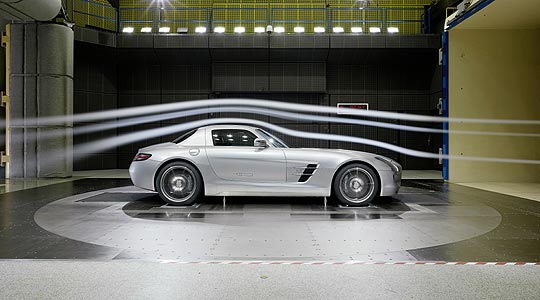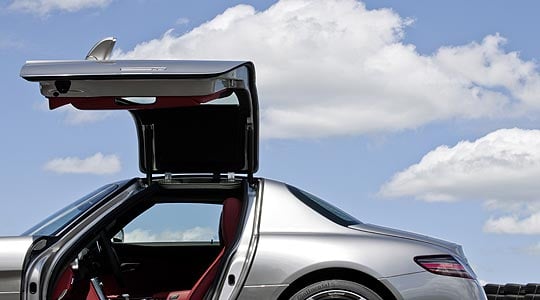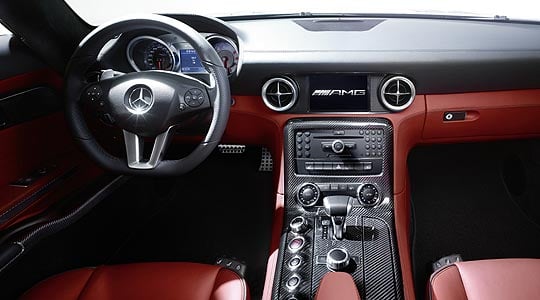
Bullish, awe-inspiring, passionate and courageous is how Chris Hrabalek sees the Mercedes SLS AMG...
The recent announcement by Mercedes that it will return to Grand Prix racing in its own right – taking control of the current F1 Double Championship-winning team Brawn and thus reviving the full ‘Silver Arrows’ legend – is as bullish and awe-inspiring as the decision to re-incarnate the iconic ‘Gullwing’ masterpiece in the form of the Mercedes SLS AMG. Both actions show not only passion and courage, but give a strong indication that Mercedes was not just the first car manufacturer – it also intends to be the last.
At a time when automotive manufacturers are crumbling under the pressure of the global recession and steering aimlessly from one alternative fuel source to another, Stuttgart’s finest seem more than keen to face a new challenge. One could certainly dismiss Mercedes’ recent announcements as a new form of Seppuko-style management technique – and, ultimately, only time will tell. But in the meantime, the decision to drive against the market traffic and support F1 as a manufacturer, while launching yet another sportscar into an already overcrowded market, will surely raise an eyebrow or two with their cousins in Woking.

Looking at the new Mercedes SLS AMG, it becomes very clear from the start that the SLS will appeal to a larger crowd of existing Mercedes customers than the various SLR derivatives ever could. Gone is the phallic bonnet treatment and tacky detailing. The proportions of the SLS are classic, yet show modern styling themes and contemporary surface treatment. The revival of classic elements – such as the gullwing doors – do their best to seamlessly connect to black-and-white images of past personalities at the wheel of the 300SL original; to a seemingly long-gone era of style, class and charisma.
The exterior styling of the SLS AMG is reminiscent of its 300SL ancestor. There’s a wide radiator with a prominent Mercedes star in the middle, held there by wing-shaped cross fins that also form the main theme of the interior, where air-outlets clearly took inspiration from aero jet engines. The gear selector, meanwhile, is not unlike the throttle control of a Boeing 747. Although the Mercedes SLS AMG’s design themes often seem quite literal, the styling is never banal, as the classic is very well blended with the contemporary: an example is the introduction of vertically arranged headlights, adding visual drama.

Naturally, good design needs to be more than skin deep and a product can only be successful if its technological raison d’etre is addressed. No such worries with the SLS, as it features an aluminium spaceframe body, powered by a 6.3-litre AMG front-mid-mounted engine, generating 571HP and 650Nm of torque. Coupled to a seven-speed dual clutch transmission in a transaxle layout configuration, the total weight is limited to 1620kg; a significant achievement, considering that the carbonfibre-bodied SLR was more than 150kg heavier. And this pretty much sums up the incredible achievement of the men at AMG.
While the previous decade represented an era of partnerships between brands such as Mercedes and McLaren, both on-track (in the shape of various Mercedes-powered McLaren F1 racers) and off-track (in the form of the above-mentioned Mercedes-Benz SLR McLaren), the decade to come will be one of amicable competition on both levels at best. Judging from the first move, it seems that this was a wise decision on Mercedes’ part.
Text: Chris Hrabalek
Photos: Mercedes-Benz
ClassicInside - The Classic Driver Newsletter
Free Subscription!



